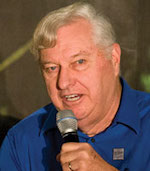The USDA announced a new program to hire 100 young people as a “Climate Corps” for Agriculture.
The 100 selected youth for the Climate Corps should spend 100% of their training focused on no-till, cover crops and soil health. They can then educate farmers across the country which will do more for "climate" than any other topic they could be taught. And the 100 should all be "farm kids" who have experience with no-till. If USDA requires a college degree, it should be in Agriculture.
Who does USDA plan to hire and what will those young folks do?
According to a news release, USDA will train a new generation of Americans to help tackle climate change in rural communities and have them help deliver billions of dollars in climate-smart agriculture practices. This will put them on a pathway into careers at USDA.
Let’s get serious. Do you think USDA will select only “farm kids” and only train them to teach no-till, cover crops and soil health? No. This is 2024. They will select 100 youths who are representative of the U.S. population, not representative of U.S. agriculture. They will likely be taught a plethora of topics supposedly related to climate change, including urban gardening, free-range chickens, and raising sheep on solar farms.
Converting our cropland to continuous no-till with cover crops would do more to meet the goals of climate evangelists than all other possible farm practices combined. In simplistic terms, crops remove CO2 from the air, expel the O2, and store a lot of the C in the ground as organic matter. If the land is not tilled, over time the amount of carbon in the soil increases. This improves soil health, making the land more resilient to “severe” weather. And voila, this reduces the percentage of CO2 in the air to “normal,” eliminating the threat of melting glaciers and rising oceans.
Seriously, there are other “farming practices” that can help, mainly by reducing the use of fossil fuel. Irrigation is a good example. Flood irrigation is inefficient and should be replaced with precision sprinkler irrigation or drip irrigation. This saves precious water and energy required for pumping. New technology for grain drying in the Corn Belt can reduce energy use by more than 25%. Inject fertilizer with precision to produce the same or more tons of crops with less fertilizer. Returning cattle to the cropland and using rotational grazing of cover crops is “Climate Smart.”
Keep in mind that these additional practices are built on a foundation of no-till (including strip-till), cover crops, and healthy soil. Without that strong foundation, other “smart” practices have little effect.
The first 100 in the Climate Corps, and the dozens to follow, need hands-on training by experienced no-till farmers. Soil and Water Conservation Districts are involved and can make sure the trainees each have a shovel and they get up close and personal with healthy soil.
And there’s nothing wrong with free-range chickens and urban gardening, but the impact on climate is zilch.







Post a comment
Report Abusive Comment